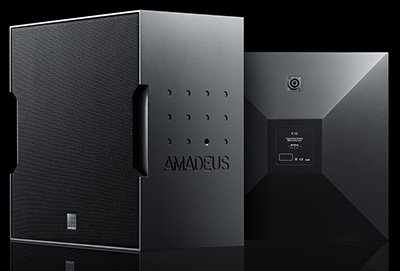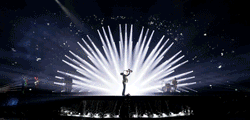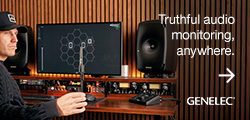Amadeus’ new C Series high-definition, point-source speaker system was initially designed and manufactured specifically for the Paris-based Theatre National de Chaillot (Chaillot National Theatre), which hosts the most prestigious dance and theatre companies from Europe and throughout the world – the ‘C’ is a tribute to Chaillot.
 The C Series comprises two models, with plans for futher models to be introduced in a near future.
The C Series comprises two models, with plans for futher models to be introduced in a near future.
The C12 is based on a two-way point-source transducer featuring a 12-inch woofer, and a 1.75-inch driver, while the C15 is based on a three-way point source transducer featuring a 15-inch woofer. The C 15 features two neodymium diaphragm compression HF drivers, coaxially mounted with a single acoustical output, and coupled to an individual waveguide.
Both models include a unique diffraction horn, each is optimised for 60° vertical dispersion and 90° horizontal dispersion, which can be inverted by rotating the system through 90°.
Dreamed up by Jean Vilar, created by Georges Wilson in 1967 and named in homage to Firmin Gemier who created the Théâtre National Populaire, (People’s National Theater), the Firmin Gémier Hall has re-opened after four years of construction and renovations. Completely remodelled with 180sq-m floor space, a 390-seat retractable bench, and featuring a dozen Amadeus C15 Series speakers among many other high-tech sound breakthroughs, Firmin Gémier Hall is now a flexible space for artistic creativity.
‘Given the very specific acoustical characteristics of the Firmin Gemier Hall, installing a conventional point-source system was not an option,’ explains Marc Piera, Sound Department Manager at Théâtre National de Chaillot. ‘We tried testing several coaxial systems – most notably the PMX 15 speakers already used in the Jean Vilar Hall. They also were not what we needed, due to their wide [80° horizontal, 80° vertical] conical directivity and the expansion shape of their waveguide.’
‘Indeed, the very diverse types of events staged in the venue, the near-systematic use of multiple sources, sometimes immersive, coupled to a high level of natural hall reverberation meant it was necessary to resort to a system offering controlled directivity over a wide spectral band. Also, the top of tier position of the last row of seats, 15m away from the tip of the stage and nearly 25m away from the back of the stage, rendered the use of a stereo line source system irrelevant, even if more directive, given the associated heavy losses on the spatial aspect of sound program material.
‘As already mentioned, a traditional line source system, with constant or variable curvature, placed in a classical configuration, would inevitably have affected the sources’ localisation, according to the Haas Effect. In the 1940s, this German scientist established that a source’s localisation is given by the direction of the first sound reaching the ear (direct sound). If the difference between the spectator’s position, the primary source and the secondary source grows, this effect becomes stronger.
‘Which is why we participated in the development of a new type of speakers from Amadeus, that features a tri-axial transducer (three ways mounted on the same axis), including two compression drivers inherited from the MHF section of the Diva M2 array system.’
‘The tweeter features a unique combination of extended frequency response, high efficiency, and wide dispersion,’ says Amadeus Director of R&D, Michel Deluc. ‘The driver is a two-way system, employing two concentric annular ring diaphragms. Each driver covers a smaller frequency range for increased power handling, high dynamic, and extremely low distortion. The larger annular midrange diaphragm, featuring a 3.5-inch (90mm) voice coil, covers the frequency range between 800Hz and 6.5kHz with a smooth, linear response. The ultra-light annular diaphragm for the high range, featuring a 1,75-inch (45 mm) voice coil, offers exceptional transient response with very high efficiency from 6kHz to 22kHz.’
‘The wide diffraction horn, optimized for a horizontal dispersion of 90° and a vertical dispersion of 60° allows for a control over directivity that extends to 800Hz, a very high signal to noise ratio, and an optimised “reach”, compared to ordinary coaxial systems.’
‘I fully believe this technology will find uses in the many theatre venues presenting similar acoustical challenges, and also in cases where directivity control over a wide spectral band is necessary, without adverse effects on spatial information,’ Piera concludes.
More: http://amadeusaudio.fr










